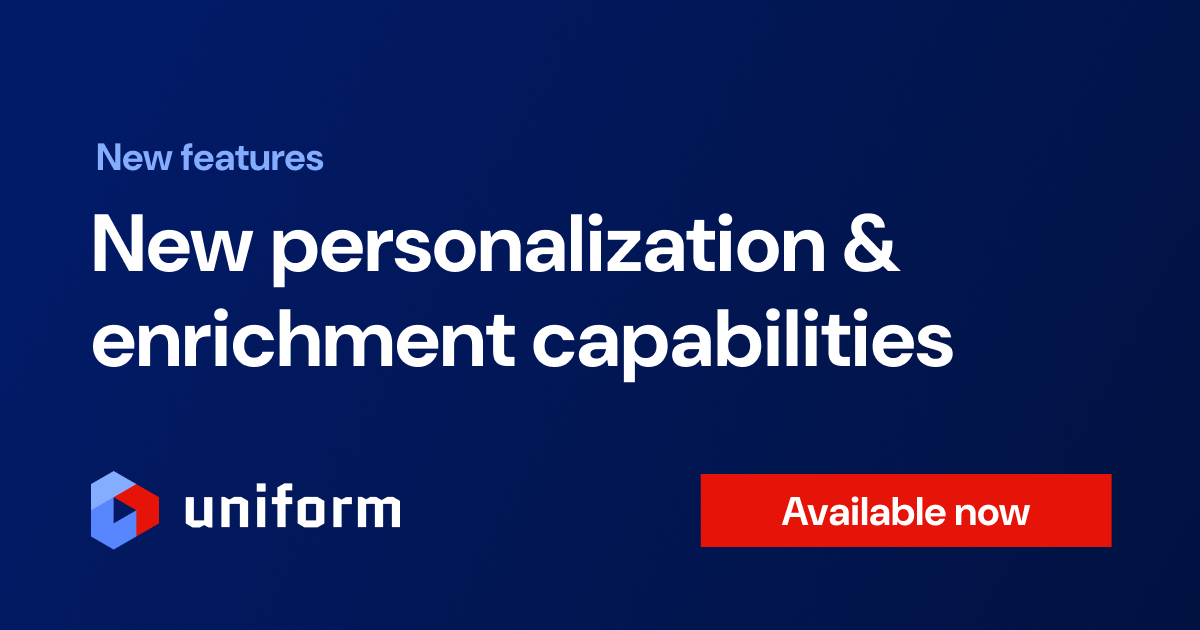May 15, 2025

This release introduces significant improvements to Uniform's personalization and classification capabilities. These enhancements make it easier than ever to create tailored experiences for your audiences while providing more flexibility for complex use cases.
Improved personalization capabilities
Simplified personalization
Our personalization engine now offers more flexibility in how content variations are selected for your visitors. Beyond our existing "Top-down criteria matching" selection method that supports advanced personalization requirements, the new "Strongest variation matching" selection method significantly simplifies personalization setup.
This intuitive approach:
- Focuses on a single dimension per variation rather than complex criteria rules
- Automatically selects the variation matching the visitor's strongest dimension score
- Removes the need for manual ordering of variations
- Makes personalization more accessible for marketing teams
Best for: Straightforward personalization scenarios where you want to match visitors to clear audience segments or interest categories.
Custom personalization logic
For those requiring custom personalization logic, we've added support for creating your own selection methods through our Mesh framework. This powerful extensibility capability lets you:
- Implement bespoke algorithms tailored to your specific business requirements
- Create personalization rules based on external data sources
- Define custom variation selection logic that integrates with your existing systems
- Gain full control over how variations are configured and selected
Best for: Advanced personalization needs that go beyond standard selection methods.
Nested personalization
We've also introduced nested personalization, allowing you to place personalization components within other personalization components. This creates sophisticated decision trees perfect for hierarchical targeting needs.
With nested personalization, you can:
- Create multi-level targeting scenarios (e.g., region → city, industry → company size)
- Combine different selection methods at each level
- Build complex personalization experiences without developer intervention
Best for: Multi-dimensional personalization needs that require hierarchical decision-making.
Enrichment tagging for entries and components
The new Enrichment parameter type for both components and content types brings enhanced flexibility to how you classify visitors based on the content they interact with. This parameter is especially valuable when used in dynamic compositions (such as detail pages for articles or products) where enrichment values need to vary based on the specific content being displayed.
The "Enrichment tag" parameter on components can now be connected to data resources, allowing you to dynamically assign enrichment values based on your content. This creates a more accurate visitor profile based on actual content engagement rather than static values.
We've also made various UI improvements to how enrichments are assigned.
Best for: Dynamic websites with content-driven personalization needs.
Quirks as direct personalization criteria
Finally, you can now use quirks directly as criteria for personalization variations without first wrapping them in signals. This streamlines your personalization setup when working with:
- External systems (such as a CDP or CRM)
- Application context (such as geo-location or user login status)
- Boolean or attribute-based personalization scenarios
Best for: Personalization based on visitor attributes or external data rather than behavioral scores.
Getting started
To leverage these new capabilities, update your Context SDK to version 20.9.0 or higher and explore our updated documentation for detailed implementation guidance: